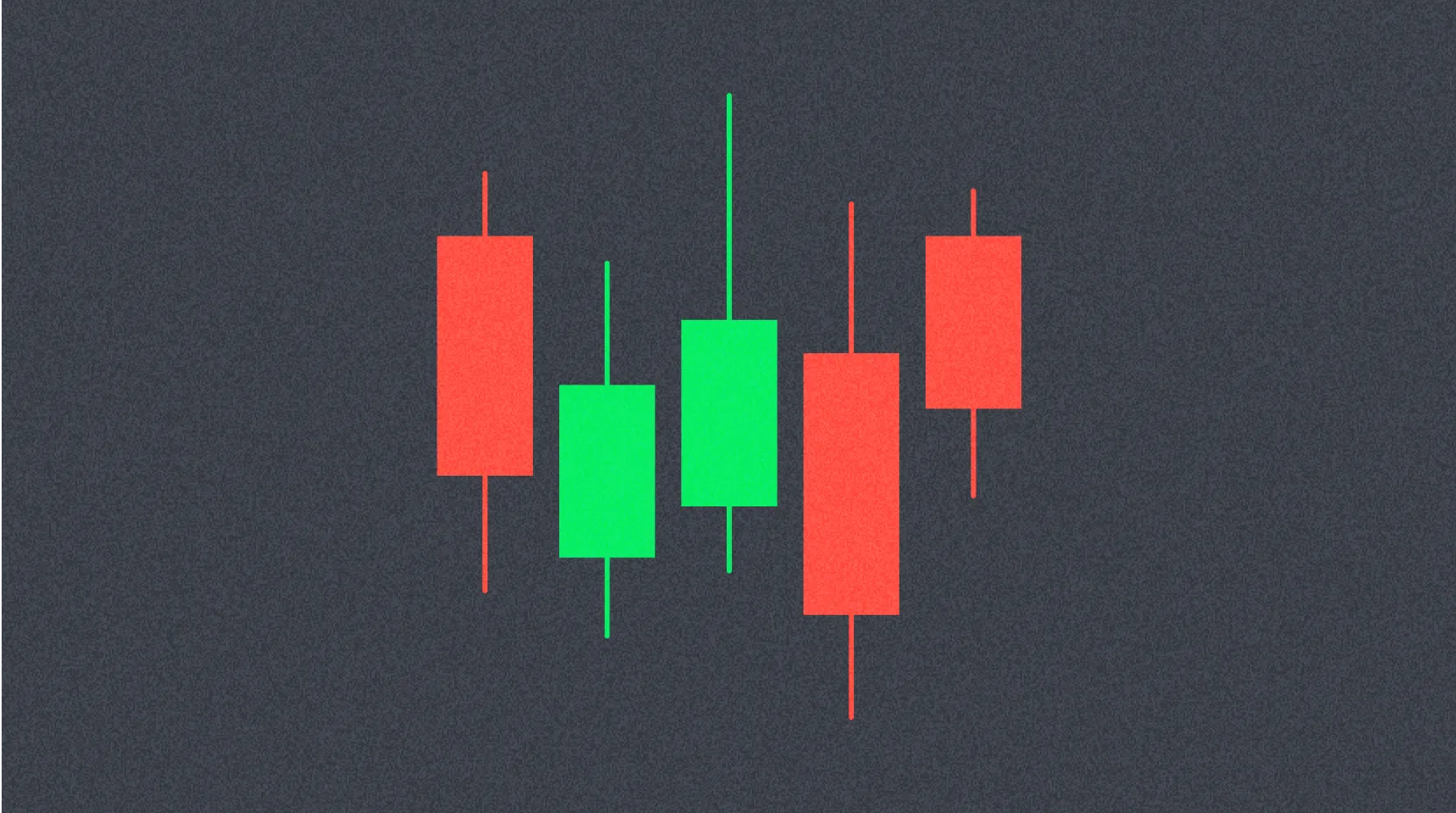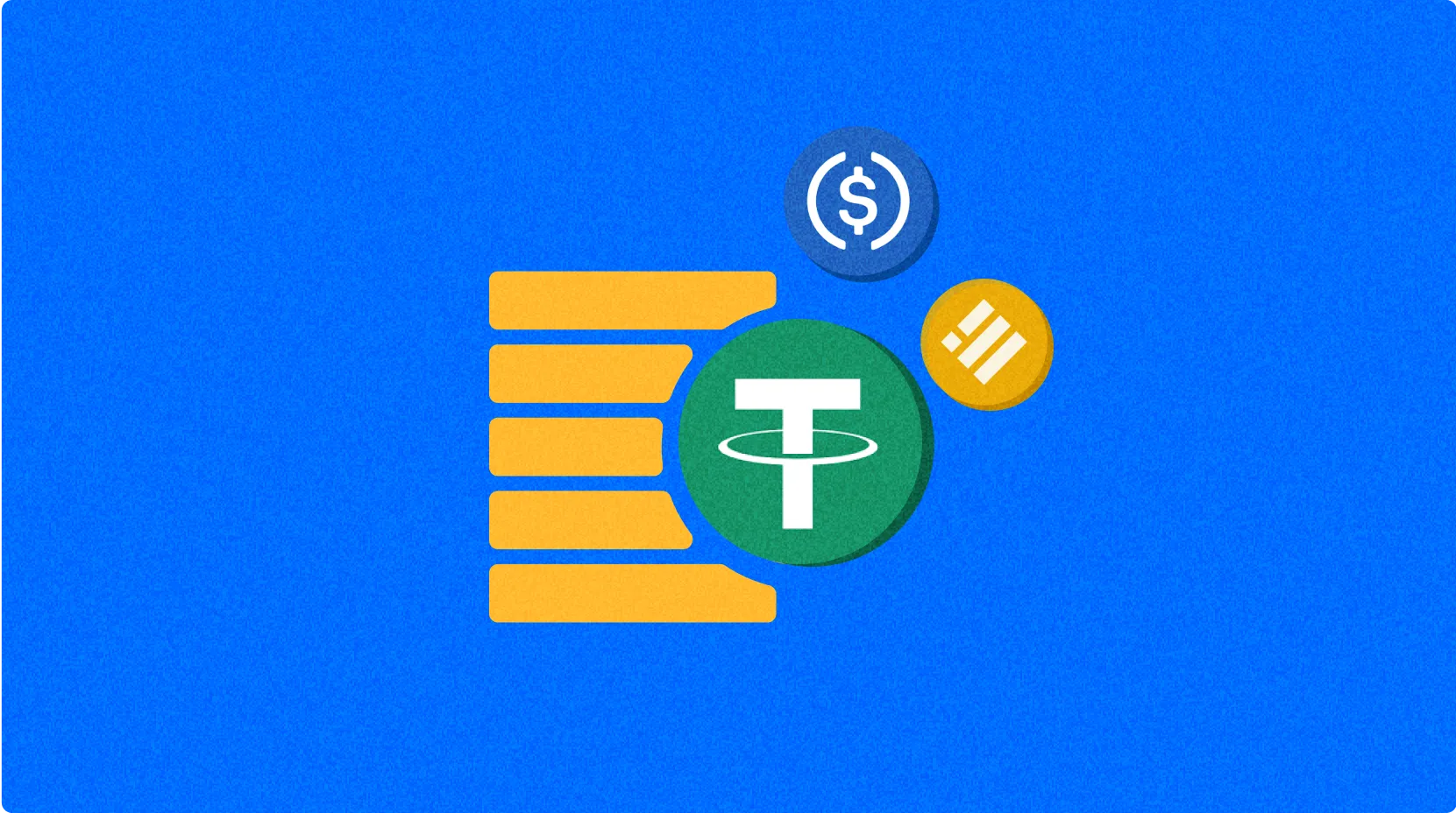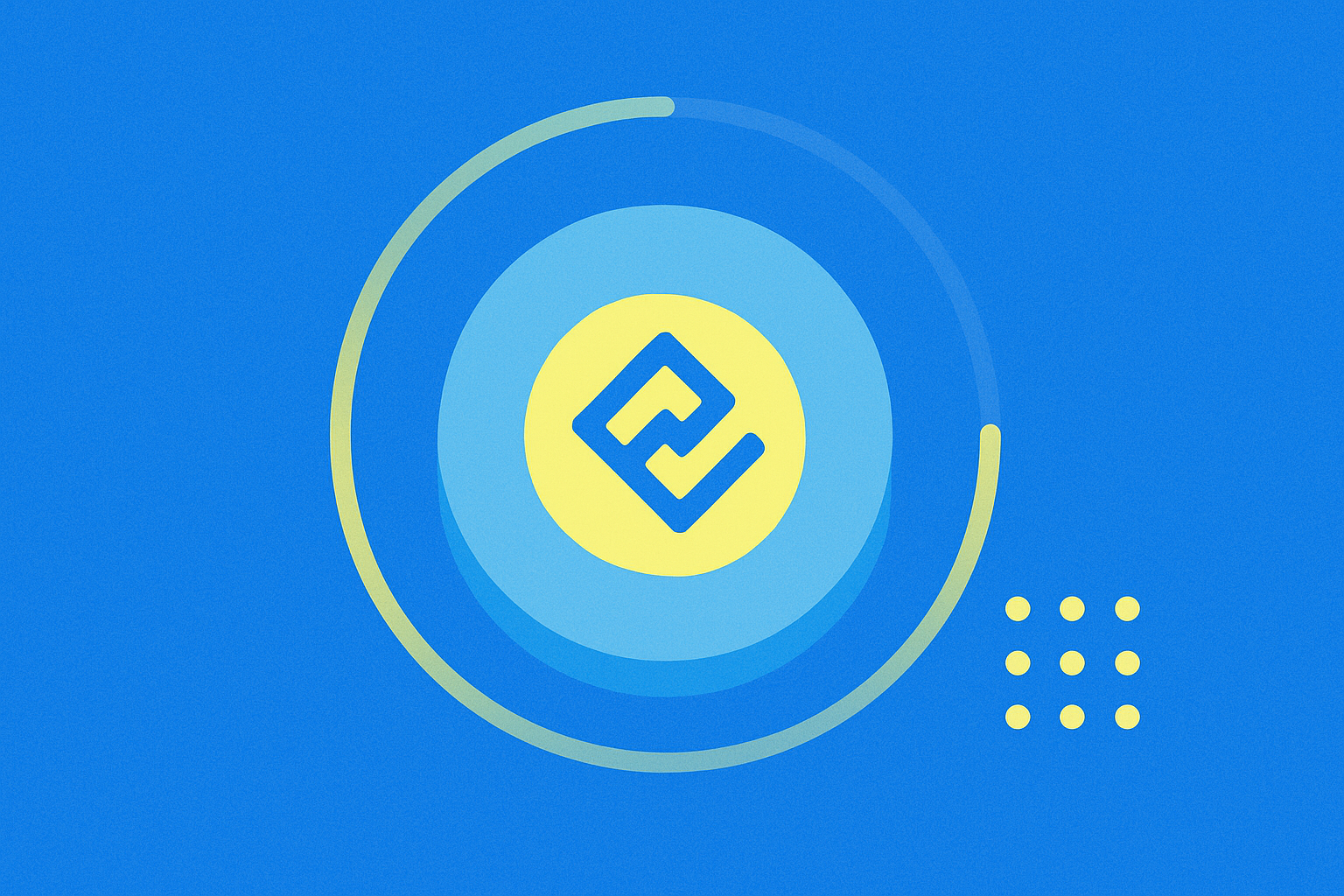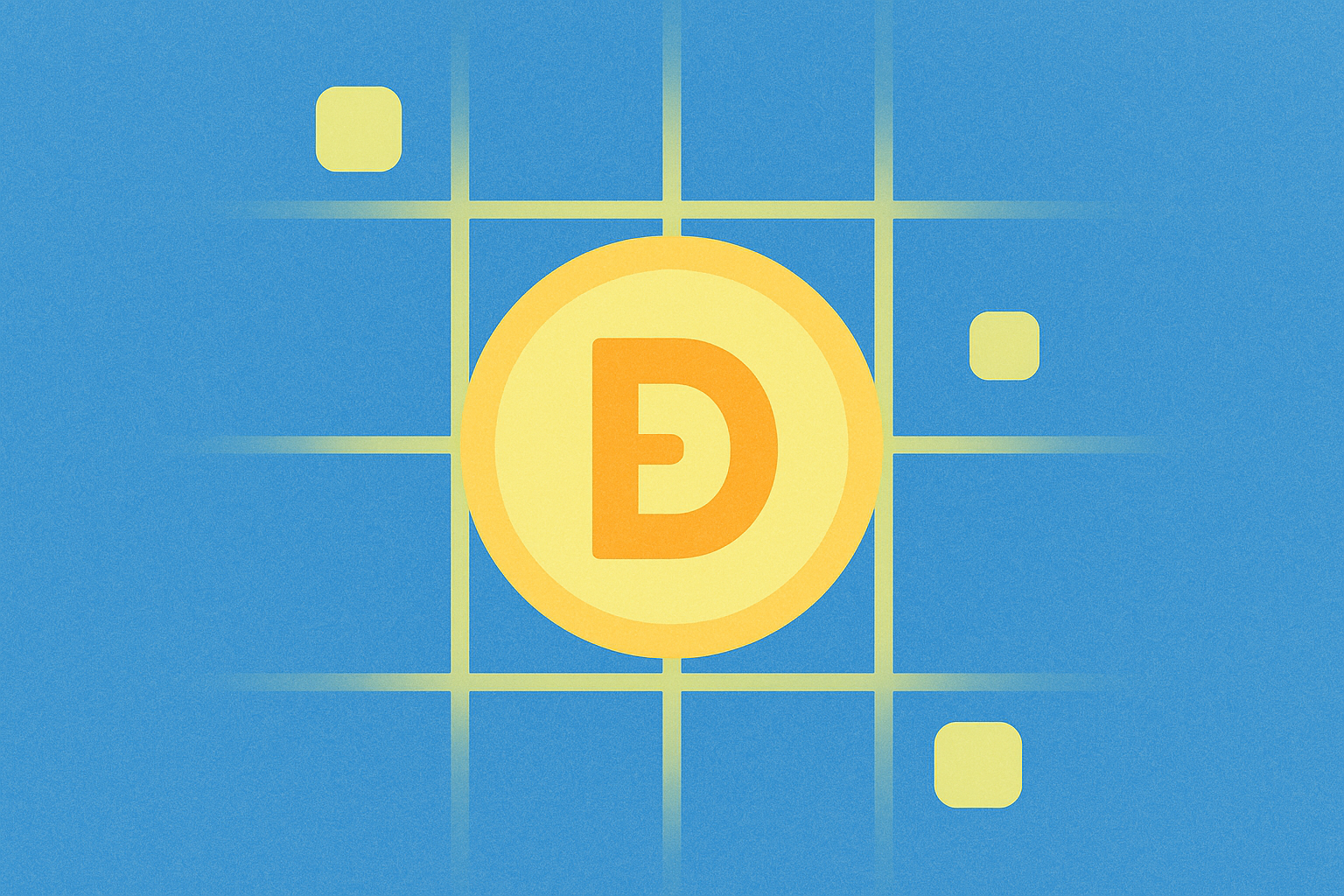Công nghệ blockchain của Ethereum hoạt động như thế nào?
4-17-2025, 5:33:34 AM
Ethereum
Xếp hạng bài viết : 3.6

0 xếp hạng
Công nghệ blockchain của Ethereum là một sổ cái phân quyền, phân phối ghi chép các giao dịch và thực thi hợp đồng thông minh trên mạng máy tính (nút). Nó nhằm mục tiêu là minh bạch, an toàn và chống lại sự kiểm duyệt.

Đây là một giải thích chi tiết về nguyên tắc hoạt động của công nghệ chuỗi khối Ethereum:
1. Nodes và Nhật ký Phân phối
- Nodes: Mạng lưới Ethereum được tạo thành từ nhiều node, có nghĩa là các máy tính chạy phần mềm Ethereum. Các node này lưu trữ một bản sao của toàn bộ blockchain và xác minh giao dịch và khối.
- Hệ thống sổ cái phân tán: Blockchain là một danh sách ngày càng lớn các bản ghi, gọi là khối, được liên kết và bảo mật bằng mật mã. Mỗi nút trên mạng giữ một bản sao của sổ cái này, đảm bảo rằng không có một thực thể duy nhất nào kiểm soát dữ liệu.
2. Trade
- Tạo giao dịch: Người dùng tạo giao dịch để chuyển Ether (ETH) hoặc thực hiện hợp đồng thông minh. Mỗi giao dịch bao gồm địa chỉ người gửi, địa chỉ người nhận, số lượng Ether cần chuyển và bất kỳ dữ liệu liên quan nào (ví dụ, cho tương tác hợp đồng thông minh).
- Ký giao dịch: Giao dịch được ký bằng khóa riêng của người gửi để đảm bảo tính xác thực và không thể phủ nhận. Chữ ký chứng minh rằng giao dịch đã được khởi tạo bởi chủ tài khoản.
- Giao dịch phát sóng: Khi đã được ký, giao dịch sẽ được phát sóng đến mạng lưới Ethereum và được thêm vào nhóm giao dịch đang chờ xử lý.
3. Đào và Đồng thuận
- Chứng minh công việc (PoW): Hiện tại, Ethereum sử dụng một cơ chế đồng thuận dựa trên chứng minh công việc. Các máy đào cạnh tranh để giải quyết các vấn đề toán học phức tạp để xác nhận giao dịch và tạo ra các khối mới. Người đào đầu tiên giải quyết vấn đề sẽ thêm khối mới vào chuỗi khối và nhận được Ether mới được đúc và phí giao dịch như một phần thưởng.
- Chứng minh cổ phần (PoS): Ethereum đang chuyển đổi sang Chứng minh cổ phần cho Ethereum 2.0. Trong PoS, người xác thực được chọn dựa trên số lượng Ether họ nắm giữ và sẵn lòng đặt cược như tài sản đảm bảo. Người xác thực tạo khối mới, xác thực giao dịch và kiếm phần thưởng thông qua phí giao dịch và Ether mới được đúc ra.
- Tạo khối: Khi các thợ đào hoặc người xác minh giải quyết vấn đề, họ sẽ tạo một khối mới chứa một tập hợp các giao dịch đã được xác minh. Khối sau đó được phát sóng đến mạng lưới.
- Đồng thuận: Các nút khác trên mạng xác nhận khối mới. Nếu khối hợp lệ, nó sẽ được thêm vào bản sao blockchain của họ. Quá trình này đảm bảo rằng tất cả các nút duy trì một phiên bản sổ cái nhất quán và chính xác.
4. Hợp Đồng Thông Minh
- Hợp đồng thông minh: Ethereum cho phép tạo và thực thi các hợp đồng thông minh, đó là các hợp đồng tự thực thi với các điều khoản được viết trực tiếp vào mã. Những hợp đồng này sẽ tự động thực thi khi điều kiện xác định được đáp ứng.
- Triển khai: Hợp đồng thông minh được triển khai trên chuỗi khối Ethereum với địa chỉ duy nhất của chúng. Sau khi triển khai, chúng có thể tương tác bằng cách gửi giao dịch đến địa chỉ của chúng.
- Thực thi: Khi một giao dịch được gửi đến một hợp đồng thông minh, mã của hợp đồng được thực thi trên Máy ảo Ethereum (EVM) trên mỗi nút trong mạng lưới. Điều này đảm bảo rằng trạng thái của hợp đồng được cập nhật một cách nhất quán trên toàn bộ mạng lưới.
5. Máy ảo Ethereum (EVM)
- EVM: EVM là môi trường thực thi cho hợp đồng thông minh. Nó cho phép các nhà phát triển viết mã bằng ngôn ngữ cấp cao như Solidity và Vyper, sau đó biên dịch nó thành bytecode có thể được thực thi bởi EVM.
- Thực thi: EVM thực thi bytecode của hợp đồng thông minh để đảm bảo rằng tất cả giao dịch và tương tác hợp đồng được xử lý một cách chính xác và an toàn.
6. Gas và Phí
- Gas: Gas là đơn vị đo lường cho nỗ lực tính toán cần thiết để xử lý giao dịch trên mạng Ethereum. Mỗi thao tác giao dịch hoặc mỗi thao tác trong việc thực hiện một hợp đồng thông minh đòi hỏi một lượng gas nhất định.
- Phí gas: Người dùng phải trả phí gas để bồi thường cho các máy chủ mạng vì công việc của họ. Chi phí gas sẽ thay đổi dựa trên tình trạng quá tải mạng và các yếu tố khác. Phí gas đảm bảo mạng luôn an toàn và hiệu quả bằng cách ngăn chặn rác và khuyến khích các máy chủ mạng.
7. Bảo mật và tính không thể thay đổi
- Mật mã học: Ethereum sử dụng công nghệ mật mã để đảm bảo an ninh và tính toàn vẹn của blockchain. Các giao dịch và khối được bảo vệ bằng chữ ký số và băm mật mã.
- Bất biến: Khi một khối được thêm vào chuỗi khối, việc sửa đổi nó trở nên rất khó khăn. Sự bất biến này đảm bảo rằng lịch sử giao dịch không thể bị thay đổi và đáng tin cậy.
8. Phân quyền
- Mạng phi tập trung: Tính chất phi tập trung của Ethereum có nghĩa là không có một thực thể duy nhất nào kiểm soát mạng lưới. Sự phi tập trung này nâng cao tính bảo mật, sự linh hoạt và tính minh bạch.
- Chính trị cộng đồng: Cộng đồng Ethereum đóng một vai trò quan trọng trong việc phát triển và quản trị của nền tảng. Các đề xuất về thay đổi và nâng cấp được thảo luận và triển khai thông qua quá trình hợp tác.
Kết luận
Công nghệ blockchain của Ethereum ghi lại việc thực hiện các giao dịch và hợp đồng thông minh bằng cách duy trì một sổ cái phân quyền, phân tán. Nó sử dụng cơ chế đồng thuận (hiện tại là PoW, chuyển sang PoS) để đảm bảo rằng tất cả các nút trên mạng đạt được sự đồng thuận về trạng thái của sổ cái. Hợp đồng thông minh cho phép tương tác tự động, không cần tin cậy, trong khi Máy ảo Ethereum (EVM) cung cấp môi trường an toàn để thực hiện các hợp đồng này. Phí gas đảm bảo mạng luôn hiệu quả và an toàn. Sự kết hợp của những tính năng này khiến Ethereum trở thành một nền tảng mạnh mẽ cho các ứng dụng phân quyền và dịch vụ tài chính.
* Thông tin không nhằm mục đích và không cấu thành lời khuyên tài chính hay bất kỳ đề xuất nào được Gate cung cấp hoặc xác nhận.
Bài viết liên quan

Cách đào Ethereum vào năm 2025: Hướng dẫn hoàn chỉnh cho người mới bắt đầu
Hướng dẫn toàn diện này khám phá khai thác Ethereum vào năm 2025, chi tiết về sự chuyển đổi từ khai thác GPU sang đặt cọc. Nó bao gồm sự tiến hóa của cơ chế đồng thuận Ethereum, việc hoàn thiện đặt cọc để có thu nhập passsive, các lựa chọn khai thác thay thế như Ethereum Classic và các chiến lược tối ưu hóa lợi nhuận. Lý tưởng cho người mới bắt đầu và những người khai thác có kinh nghiệm, bài viết này cung cấp những cái nhìn có giá trị về trạng thái hiện tại của khai thác Ethereum và các lựa chọn thay thế trong cảnh quan tiền điện tử.
5-9-2025, 7:23:30 AM

Ethereum 2.0 vào năm 2025: Staking, Khả năng mở rộng và Tác động môi trường
Ethereum 2.0 đã cách mạng hóa cảnh quan blockchain vào năm 2025. Với khả năng đặt cược cải tiến, cải thiện tính mở rộng đáng kể và ảnh hưởng môi trường giảm đáng kể, Ethereum 2.0 đứng nổi bật so với người tiền nhiệm của nó. Khi thách thức về sự áp dụng được vượt qua, bản nâng cấp Pectra đã đưa vào một kỷ nguyên mới về hiệu quả và bền vững cho nền tảng hợp đồng thông minh hàng đầu thế giới.
4-25-2025, 6:36:13 AM

Ethereum là gì: Hướng dẫn năm 2025 cho các người yêu thích và nhà đầu tư tiền điện tử
Hướng dẫn toàn diện này khám phá sự phát triển và tác động của Ethereum vào năm 2025. Nó bao gồm sự phát triển bùng nổ của Ethereum, bản nâng cấp cách mạng Ethereum 2.0, hệ sinh thái DeFi trị giá 89 tỷ đô la đang phát triển mạnh mẽ, và giảm chi phí giao dịch đáng kể. Bài viết xem xét vai trò của Ethereum trong Web3 và triển vọng tương lai của nó, cung cấp cái nhìn quý giá cho các người hâm mộ tiền điện tử và nhà đầu tư đang điều hướng trong cảnh quan blockchain động này.
4-17-2025, 5:50:12 AM

Hợp đồng thông minh là gì và chúng hoạt động như thế nào trên Ethereum?
Hợp đồng thông minh là các hợp đồng tự thực thi với các điều khoản của thỏa thuận được viết trực tiếp vào mã code. Chúng tự động thực thi khi các điều kiện đã được xác định được đáp ứng, loại bỏ nhu cầu cho các bên trung gian.
4-17-2025, 5:45:46 AM

Phân Tích Giá Ethereum: Xu Hướng Thị Trường Năm 2025 và Ảnh Hưởng của Web3
Vào tháng 4 năm 2025, giá của Ethereum đã tăng vọt, làm thay đổi cảnh quan tiền điện tử. Dự báo giá ETH năm 2025 phản ánh sự tăng trưởng chưa từng có, được thúc đẩy bởi cơ hội đầu tư Web3 và tác động của công nghệ blockchain. Phân tích này khám phá giá trị tương lai của Ethereum, xu hướng thị trường và vai trò của nó trong việc định hình nền kinh tế số, mang đến thông tin chi tiết cho các nhà đầu tư và người yêu công nghệ.
4-28-2025, 3:06:16 AM

Giá Ethereum vào năm 2025: Phân tích thị trường và Chiến lược đầu tư
Giá Ethereum vào năm 2025 đã đạt mức cao kỷ lục, giao dịch giữa **$5,687** và **$6,646**. Sự tăng đột ngột này phản ánh vai trò quan trọng của tiền điện tử trong xu hướng Web3 và tác động của công nghệ blockchain. Khi việc áp dụng từ các tổ chức tài chính tăng cao và phân tích thị trường chỉ ra sự tiếp tục phát triển, nhà đầu tư thông minh đang hoàn thiện chiến lược đầu tư Ethereum của họ để tận dụng cuộc đua vàng kỹ thuật số này.
4-28-2025, 2:16:58 AM
Đề xuất dành cho bạn

Tổng quan toàn diện về EIP 4337: Triển khai Account Abstraction trong Web3
Tìm hiểu cách EIP 4337 đang cách mạng hóa việc quản lý tài khoản trên Ethereum bằng giải pháp trừu tượng hóa tài khoản, giúp người dùng trải nghiệm thuận tiện hơn thông qua ví hợp đồng thông minh và các tính năng bảo mật linh hoạt. Nội dung này đặc biệt phù hợp với các nhà phát triển Web3 và cộng đồng yêu công nghệ blockchain muốn cập nhật xu hướng đổi mới ví trên Ethereum.
12-17-2025, 6:18:25 AM

Tìm hiểu về độ hiếm của NFT: Cẩm nang đánh giá chi tiết
Khám phá cốt lõi của độ hiếm NFT qua hướng dẫn chấm điểm chuyên sâu, phù hợp với nhà sưu tập, nhà đầu tư và cộng đồng kỹ thuật số. Tìm hiểu các công cụ phân tích hàng đầu để đánh giá điểm số độ hiếm, nhận diện đặc điểm ảnh hưởng đến giá trị, và đưa ra quyết định đầu tư tài sản một cách sáng suốt trong thị trường NFT đầy tiềm năng. Mở rộng chiến lược tối ưu hóa lợi nhuận và chủ động thích ứng với môi trường biến động nhờ kiến thức chuyên môn vững chắc.
12-17-2025, 6:03:55 AM

Tomarket Daily Combo 17 tháng 12 năm 2025
Khám phá phần thưởng hàng ngày thuận tiện cùng Tomarket Daily Combo vào ngày 17 tháng 12 năm 2025. Tìm hiểu các gợi ý trên kênh YouTube của Tomarket, giải mã manh mối và nhận thưởng nhanh chóng. Trải nghiệm Web3 vượt trội khi thường xuyên chơi trên Telegram, đồng thời tích lũy token và nâng cao thứ hạng trên nền tảng. Hãy tham gia Tomarket để vừa giải trí vừa nhận ưu đãi crypto ngay hôm nay!
12-17-2025, 6:00:37 AM

Linea (LINEA) có phải là lựa chọn đầu tư hiệu quả?: Đánh giá chuyên sâu về tiềm năng và rủi ro của giải pháp Layer 2 dành cho Ethereum
Tìm hiểu xem Linea (LINEA) – giải pháp Layer 2 thế hệ mới trên Ethereum – có phù hợp để đầu tư không, thông qua việc phân tích tiềm năng phát triển và các rủi ro liên quan. Nắm bắt lịch sử giá, cơ chế đốt kép độc đáo cùng diễn biến thị trường của Linea. Chủ động cập nhật các phân tích chuyên sâu và dự báo giá tương lai để tối ưu hóa chiến lược đầu tư của bạn. Theo dõi giá thị trường trực tiếp trên Gate.
12-17-2025, 5:29:41 AM

0xProject (ZRX) có đáng để đầu tư không?: Đánh giá toàn diện về tiềm năng thị trường, công nghệ và triển vọng phát triển trong tương lai
Phân tích tiềm năng đầu tư của 0xProject (ZRX) qua góc nhìn chuyên sâu về triển vọng thị trường, nền tảng công nghệ và cơ hội phát triển tương lai. Tìm hiểu cách giao thức mã nguồn mở này thúc đẩy giao dịch ngang hàng và mở rộng khả năng kết nối giữa các DApps. Đánh giá diễn biến giá lịch sử, thực trạng đầu tư hiện tại, các rủi ro và lợi ích tiềm năng trong hệ sinh thái DeFi ngày càng biến động. Khám phá nhận định về tâm lý thị trường, mô hình quản trị và những cơ hội chiến lược dành cho nhà đầu tư. Dù bạn là người mới hay nhà giao dịch lâu năm, bài đánh giá tổng hợp này sẽ cung cấp thông tin chuyên sâu giúp bạn xác định ZRX có phải là lựa chọn đầu tư hiệu quả.
12-17-2025, 5:28:09 AM

Dog (DOG) có phải là kênh đầu tư đáng để cân nhắc?: Đánh giá chuyên sâu về diễn biến giá, nền tảng thị trường và tiềm năng phát triển sắp tới
Khám phá phân tích chuyên sâu về Dog (DOG) với tư cách là lựa chọn đầu tư tiềm năng. Bài viết này tổng hợp đánh giá về xu hướng giá lịch sử của DOG, hiệu suất thị trường hiện tại, dự báo tương lai và các rủi ro đầu tư. DOG xếp hạng thứ 324 theo vốn hóa thị trường—hãy xác định liệu DOG, một tài sản meme thuộc hệ RUNES, có phù hợp với danh mục đầu tư của bạn không. Nắm bắt các yếu tố quyết định ảnh hưởng đến tính khả thi của việc đầu tư DOG trên Gate. Tìm hiểu chi tiết về nguồn cung lưu hành, biến động giá, thách thức thanh khoản và triển vọng dài hạn của DOG trong hệ sinh thái RUNES.
12-17-2025, 5:26:50 AM






